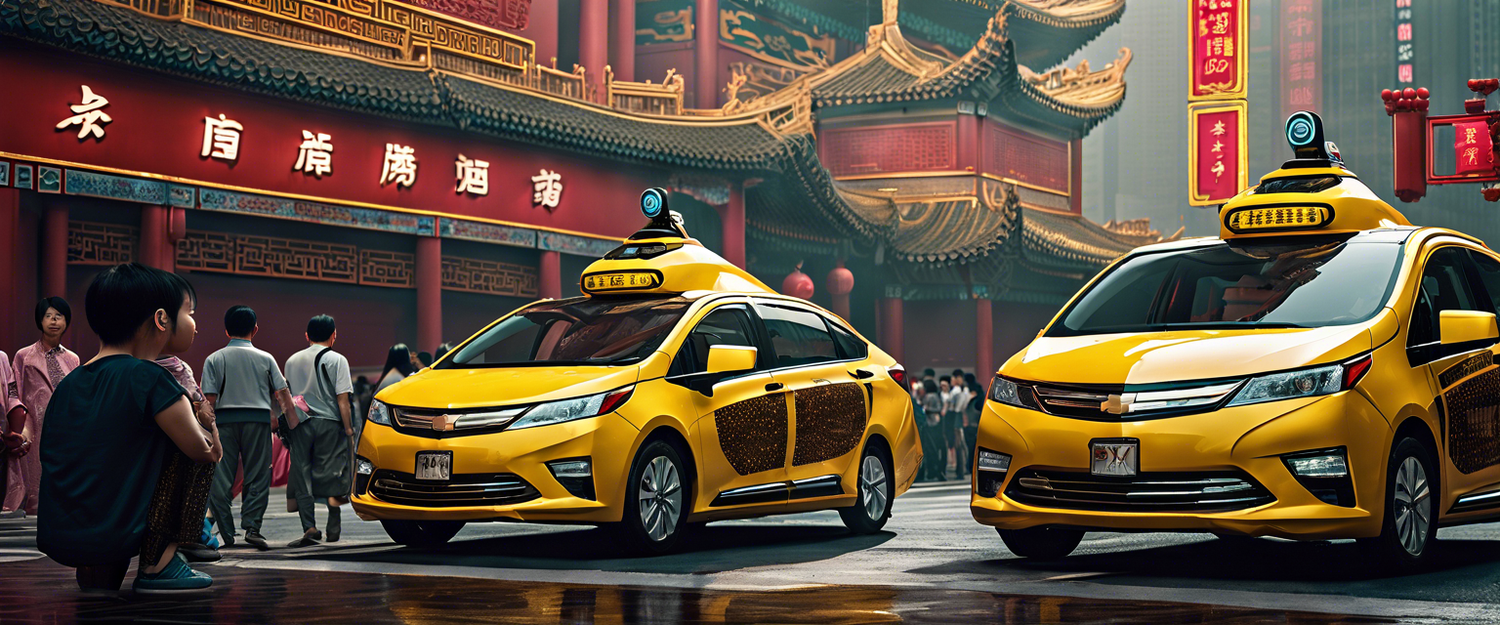The Race for Robotaxis: China vs. the U.S.
The world of autonomous vehicles is undergoing rapid transformation, characterized by aggressive expansion strategies, regulatory environments, and technological advancements. A recent example of this can be seen in the contrasting fortunes of the leading companies in the robotaxi industry. While General Motors announced a halt to funding for its troubled robotaxi company, Cruise, Chinese firm Pony.ai is gearing up for growth.
Pony.ai’s Expansion Plans
Pony.ai announced an ambitious plan to expand its robotaxi fleet significantly from approximately 250 to at least 1,000 vehicles by 2025. This expansion is facilitated by a partnership with GAC Aion, a division of one of China’s largest automobile manufacturers. With this increased fleet size, Pony.ai aims to enhance its service areas in first-tier cities like Beijing, Guangzhou, Shanghai, and Shenzhen. Currently, Pony.ai’s fleet averages 15 rides per vehicle per day, resulting in over 26,000 trips weekly.
China’s Advantage in the Autonomous Vehicle Market
China's strategy for advancing autonomous vehicles is driven by access to affordable electric vehicles and a favorable regulatory environment, supported by state incentives. Baidu, another major player in the Chinese AV sector, has targeted to reduce the cost per vehicle to about $30,000 and is working with Geely to develop driverless cars.
The U.S. Struggles with Robotaxi Development
In stark contrast, the U.S. has witnessed setbacks in partnerships between automakers and autonomous vehicle operators. Following GM’s withdrawal from Cruise, Ford ceased its Argo AI robotaxi project, previously financed in collaboration with Volkswagen. Both companies intend to focus their resources on advanced driver-assist technologies for passenger vehicles.
National Security Concerns and Trade Policies
The U.S. government is increasingly wary of China’s growing influence in the autonomous vehicle sector. The Biden administration has proposed rules to block the import of connected vehicle software from China, citing national security risks. This comes on the heels of tariffs imposed on Chinese imports, including a substantial duty on electric vehicles. Future administrations may tighten these trade restrictions further, potentially impeding the development of U.S. driverless car capabilities.
The Financial Landscape of Autonomous Vehicles
Despite ambitious plans, no autonomous vehicle operator worldwide is currently turning a profit. All companies involved are wary of expanding too quickly due to high operational costs and limited revenue streams. Public interest in companies like Pony.ai has not fully translated into market confidence, as evidenced by its initial public offering on Nasdaq, which valued the company at $5.25 billion, significantly lower than its prior valuation.
Regulatory and Deployment Challenges
As Pony.ai and similar firms push for regulatory changes to enable operations in suburban areas, challenges persist. Local governments express concerns over the impact of more robotaxis on public infrastructure, as seen in San Francisco, where residents have protested against robotaxi regulations affecting public transport and emergency services.
Conclusion: The Future of Robotaxis
China currently holds the lead in robotaxi deployments, raising questions about how far ahead it will become compared to the U.S. As autonomous vehicle technology continues to evolve, the potential benefits must be balanced against community concerns, regulatory frameworks, and international competition. The rapid pace of change in this sector makes it crucial for all players to remain agile and responsive to the market dynamics.
Call to Action
As the race for robotaxis heats up, what are your thoughts on the future of autonomous vehicle technology? Do you believe the U.S. can catch up to China? Share your opinions in the comments below!



Оставить комментарий
Все комментарии перед публикацией проверяются.
Этот веб-сайт защищается hCaptcha. Применяются Политика конфиденциальности и Условия использования hCaptcha.